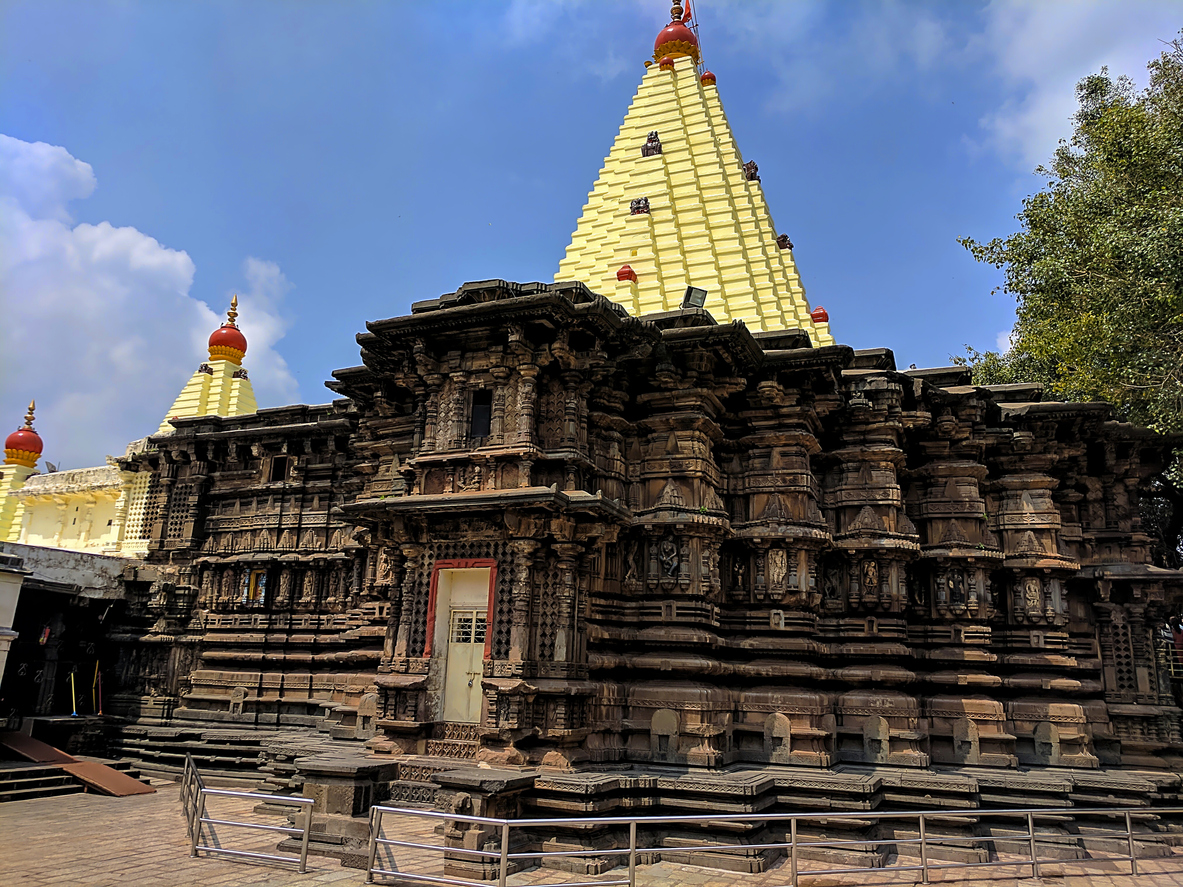Mahalaxmi temple is one of the Shakthi Peeths mentioned in Hindu Puranas (Hindu ancient religious texts). This temple is located on the banks of the Panchganga river in Kolhapur in the state of Maharashtra. The idol of the Goddess established at this temple is worshipped as Mahalaxmi or Ambabai. A legend tells about how the presence of Goddess Mahalakshmi was established at this place.
Once one of the Sapt Rishi (seven great sages) sage Bhrigu went to Vaikuntha (celestial abode of Vishnu) to meet him, but as Vishnu was resting and he failed to greet Bhrigu. Angered, he attacked Vishnu, but he, in return, welcomed Bhrigu without any anger and realised his fault.
But seeing this behaviour of Vishnu, goddess Lakshmi got angry and decided to leave Vaikuntha. Leaving Vaikuntha, she came to reside on earth and the place she chose was Kolhapur, the place where her temple is situated.
After this incident, Vishnu tried his best to convince Lakshmi to return back to the abode, but she refused to listen to his reasons. Vishnu too stayed back in Tirumala waiting for Lakshmi. It is believed that without the blessing of Lakshmi or Ambabai, the blessings of Lord Tirupati are not considered complete.
According to ancient practices, every year on the occasion of Dussehra, a silk saree is sent from Tirupati for Ambabai and the goddess’s idol is draped with it.
Kolhapur is a city in Maharashtra and the mystery behind its name is also associated with the above legend. It is believed that a demon named Kolhasur created a ruckus, and the goddess came here on the Earth, to protect people from the demon. The goddess fought with the Demon and brought him to his knees. His dying wish was that this city should be named after him and for this reason, thus the city is named Kolhapur.
If you have to look at the idol of Mahalakshmi a mace, a shield, a bowl, and a citrus fruit could be seen in her hands. Apart from the goddess Ambabai idols of Mahishasura Mardini, Vitthal and Rukhmini, Lord Shiva, Lord Vishnu, and Navagraha, are also present in this temple. Another feature of this temple is that every year in January February and November, the sun’s rays fall upon the idol of Maa Ambabai. This event is celebrated as a festival known as Kiranotsav.
The festival of Navratri is celebrated with great fervour. On the fifth day of Navratri, which coincides with Lalita Panchami, the palanquin of the goddess is carried in form of a procession, from the Mahalaxmi temple to Temblai temple.
Every Friday and on the full moon off Ashwin Kartik, Magashirsha, and Magha months of the Hindu calendar and on Chaitra Krishna Pratipada, a bronze statue of the goddess is placed in a palanquin, and is taken around the city, in the clockwise pattern of directions. Devotees believe that God Ambabai fulfills all the wishes of her devotees, and with this belief, all the devotees visit this temple every year to seek her blessings.
Advertisement











